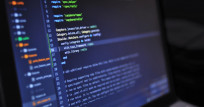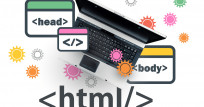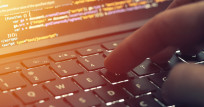The use of biometrics
Biometrics are the unique physical characteristics of a person that can be recognized by software. For example, by using fingerprint or facial recognition scanners.
Research by Lastpass shows that, on average, a consumer uses more than 25 applications that require a password. Usually, less than 13 different passwords are used.
For business users, this number can rise to more than 200 passwords. On average, no more than 40 different passwords are used. 61% of the respondents even use one password or a variation of 1 password for all their business applications.
As a result, the security of the applications and personal data is low. Biometrics is changing this because security based on specific personal characteristics is virtually impossible to crack.
Biometrics as an alternative to password identification
Biometrics is currently the best alternative to password identification because you don't have to remember anything, and biometrics are 100% person-specific.
Software can identify individuals based on the following biometrics:
1. Finger- and handprint identification
Everyone has a unique finger and handprint. Fingerprint scanners are cheap and are therefore regularly used in smartphones, laptops, door locks, and at many passport controls.
2. Face and iris identification
Everyone has a unique face and a unique iris. Cameras can recognize the unique characteristics of a face or iris. To scan the iris, the person must be close to a camera. Face recognition is also possible from a great distance. Face recognition is used at many airports to detect wanted criminals.
3. Behavior identification
How you walk and move is unique for everyone. Software can deduce from this not only who you are, but also whether you show abnormal behavior such as nervousness. Scanners do need a lot of footage to recognize specific behaviors. That is why this technique is not yet widely used.
4. Speech identification
Speech recognition software can recognize individuals by how they speak. It doesn't matter if you speak loud or soft or in another language. This relatively affordable application is often used in combination with a fingerprint or hand scanner.
5. Handwriting identification
Handwriting recognition is already widely used within banks and by courier services. Usually, this only applies to a signature. Because handwriting and especially signatures can change over the years, this technique is rarely used as a primary security measure.
6. DNA identification
The DNA of an individual is unique, but it is costly and time-consuming to compare DNA. Besides, the individual has to give DNA through, for example, a saliva test. DNA recognition is only applied on a small scale. Usually, this involves a crime.
Useful applications of biometrics
Biometrics is used for more applications than just identifying individuals. Examples of biometric applications are:
-
The creation of a shelf plan Cameras can record the walking route taken and the viewing behavior of consumers in a shop. As a result, the shops know what are known as hotspots and what are possible blind spots in the shop. This information can be used to create an optimal shelf plan that influences consumers' purchasing behavior positively.
-
Navigation optimization Software such as Hotjar maps the way you navigate in sites, software, or an app. As a result, developers and marketers know which buttons and which communication are or are not noticed. It enables them to simplify the navigation or to bring a message to the attention of the user.
-
Optimisation of equipment
Smartphone developers keep track of how often, where, and how you use your Smartphone. This way, they know if a particular model is used more or less by travelers or business people, and they can adjust the successor of this model accordingly. They also know which pre-installed applications are more and less popular. It enables them to respond even better to the wishes of the target group in the future. -
Customer recognition Customer recognition is still not very often used but is becoming more and more popular. A customer who enters a bank or shop can be recognized based on his behavior or face. The employee receives the personal information on a screen and can thus serve the customer faster and better.
Privacy and biometrics
In the film Mission: Impossible - Rogue Nation, made in 2015, actor Tom Cruise is unfairly chased by the police who recognize him everywhere on the street by his unique iris. He has to undergo an illegal eye transplant to change his identity.
Many people are afraid that person identification by biometrics will head in this direction in the near future. Everything you do in this scenario is stored in a central database, and if the government would want to do harm, it could be abused.
People who believe this scenario are not all equally anxious. If everything is known to everyone, the criminality will decrease as well. As long as you don't do anything illegal, there is nothing wrong, and if you do, the chance of getting caught is 100%.
Smartphones and privacy
It has been known for years that the NSA can wiretap your Smartphone. Even when your mobile is switched off, the NSA can remotely activate your microphone and camera without you noticing. It became a big scandal when it turned out that the NSA was tapping prominent politicians such as German Chancellor Merkel.
More and more stories are appearing in the media in which it seems that agencies or smartphone producers store information of consumers without their knowledge. Usually, this even violates local and international law.
Biometric data and identification fraud
Even though biometric identification is currently not very difficult to crack, this does not mean that it will always remain so. When all the information of an individual is known, it becomes easier to find ways to circumvent this form of security.
By using the increasingly realistic 3D animations and audio and video manipulation, an individual can easily be imitated. As a result of this identification fraud, biometric identification will suddenly no longer be as secure as one now thinks.
-
Optimierung der Ausrüstung
Smartphone-Entwickler behalten den Überblick, wie oft, wo und wie du dein Smartphone benutzt. Auf diese Weise wissen sie, ob ein bestimmtes Modell mehr oder weniger von Reisenden oder Geschäftsleuten genutzt wird, und können den Nachfolger dieses Modells entsprechend anpassen. Sie wissen auch, welche vorinstallierten Anwendungen mehr oder weniger beliebt sind. So können sie in Zukunft noch besser auf die Wünsche der Zielgruppe eingehen. -
Anerkennung der Kunden Die Anerkennung durch die Kunden wird immer noch nicht sehr oft genutzt, aber sie wird immer beliebter. Ein Kunde, der eine Bank oder ein Geschäft betritt, kann anhand seines Verhaltens oder seines Gesichts erkannt werden. Der Mitarbeiter erhält die persönlichen Informationen auf einem Bildschirm und kann so den Kunden schneller und besser bedienen.
Datenschutz und Biometrie
In dem Film Mission: Impossible - Rogue Nation, entstanden 2015, wird der Schauspieler Tom Cruise zu Unrecht von der Polizei verfolgt, die ihn überall auf der Straße an seiner einzigartigen Iris erkennt. Er muss sich einer illegalen Augentransplantation unterziehen, um seine Identität zu ändern.
Viele Menschen befürchten, dass die Identifizierung von Personen durch Biometrie in naher Zukunft in diese Richtung geht. Alles, was du in diesem Szenario tust, wird in einer zentralen Datenbank gespeichert, und wenn die Regierung Schaden anrichten will, könnte es missbraucht werden.
Die Menschen, die dieses Szenario glauben, sind nicht alle gleich ängstlich. Wenn allen alles bekannt ist, wird auch die Kriminalität abnehmen. Solange man nichts Illegales tut, ist nichts falsch, und wenn man es tut, ist die Chance, erwischt zu werden, 100%ig.
Smartphones und Datenschutz
Es ist seit Jahren bekannt, dass die NSA dein Smartphone abhören kann. Selbst wenn dein Handy ausgeschaltet ist, kann die NSA dein Mikrofon und deine Kamera ferngesteuert aktivieren, ohne dass du es merkst. Es wurde zu einem großen Skandal, als sich herausstellte, dass die NSA prominente Politiker wie die deutsche Bundeskanzlerin Merkel abhörte.
In den Medien tauchen immer mehr Geschichten auf, in denen es scheint, dass Agenturen oder Smartphone-Hersteller Informationen von Verbrauchern ohne deren Wissen speichern. In der Regel verstößt dies sogar gegen lokales und internationales Recht.
Biometrische Daten und Identifikationsbetrug
Auch wenn die biometrische Identifizierung derzeit nicht sehr schwer zu knacken ist, bedeutet dies nicht, dass sie immer so bleiben wird. Wenn alle Informationen einer Person bekannt sind, wird es einfacher, Wege zu finden, diese Form der Sicherheit zu umgehen.
Durch die Verwendung der immer realistischeren 3D-Animationen und der Audio- und Videomanipulation kann eine Person leicht imitiert werden. Als Folge dieses Identifikationsbetrugs wird die biometrische Identifikation plötzlich nicht mehr so sicher sein, wie man heute denkt.
-
Csaba MagyarFull stack web devFree
-
John SixiSoftware EngineerUS$ 0,08 pm
-
Harrie van der LubbeCreative DeveloperFree
-
Anton ShebukovSoftware EngineerUS$ 0,28 pm
-
Konstantinos ChatziangelidisSoftware EngineerUS$ 0,39 pm
-
Fırat Veralsoftware engineerUS$ 0,55 pm














